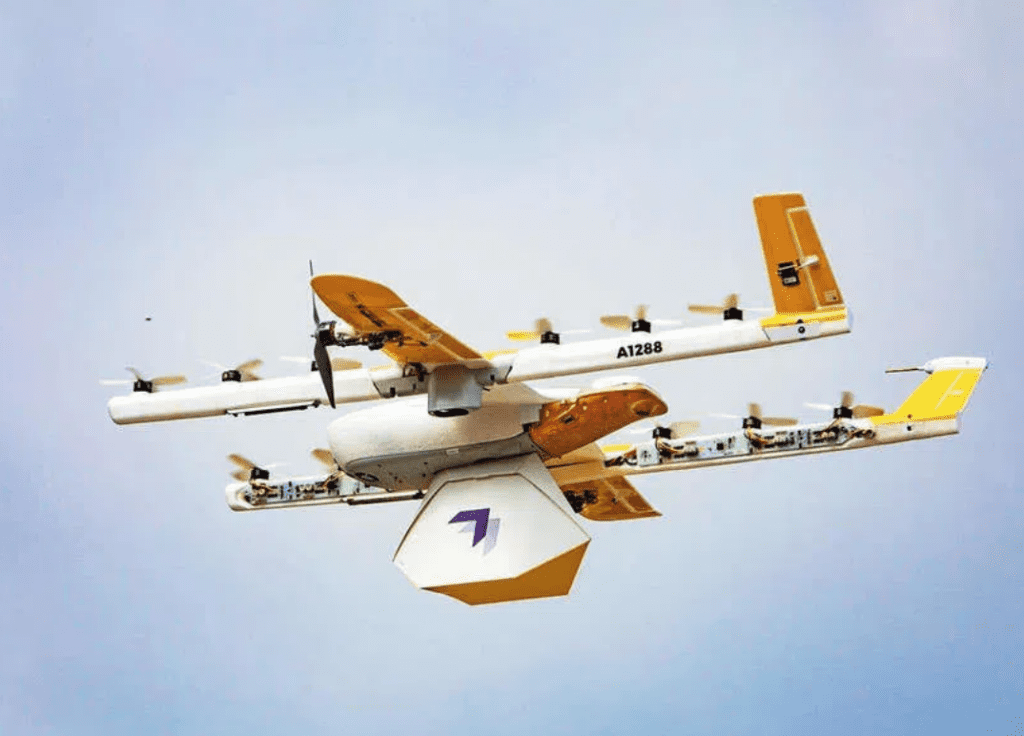Back in 2020, Japan started drone delivery of medical devices to the remote Gotō Islands. Since then, drone delivery has been discussed as a viable option in the US. As a leader in drone delivery, Wing has successfully launched over 250,000 drone deliveries in Virginia and Texas. Consumers can look forward to another option for fast, last-mile delivery!
** ** **

The evolution of Wing drone delivery
Brian Straight / Freightwaves.com
Alphabet subsidiary has surpassed 250,000 deliveries, but it is just beginning
PHILADELPHIA — Delivery in an e-commerce world is no longer cut and dried. In the early days, if a package, regardless of how big it was, needed last-mile delivery, a truck or van made it.
Today, there are options. Cars, trucks, vans, robots and drones are some of the vehicle types that are making these important deliveries.
“Here at Wing we spend a lot of time thinking about how to move packages through the sky,” wrote Adam Woodworth, chief technology officer for drone delivery provider Wing, in a recent blog posting. “Solving the problem of on-demand delivery will always require a variety of vehicles. Just as the ideal vehicle for carrying a ton of gravel would be a dump truck rather than a sedan, the ideal aircraft to carry a bottle of medication is not the same as the best one to deliver a gallon of milk, and neither is suited to deliver a refrigerator.”
Wing, the Alphabet (NASDAQ: GOOGL) subsidiary, has been building its drone operation since 2012, but it has not received as much publicity as some others, probably due to the fact that until last year the company had operated mostly in Australia. It is now in three countries, including its recent launch of commercial operations in the U.S. The company has been testing its services in the U.S. in Virginia since April 2021 and in Texas since October 2021, but it was in April that Wing announced commercial operations in the Dallas-Fort Worth area in partnership with Walgreens.
To date, Wing has made over 250,000 deliveries in the U.S., Australia and Finland, said Jung Lee, head of partnerships and strategy at Wing.
Lee, speaking at the recent Home Delivery World conference in Philadelphia, said the company’s goal is to build a delivery mechanism that is “right-sized” — a core component of the approach Google is taking to the final mile.
“It’s not really, why drone delivery,” she said. “For us, the question is why can’t we get to something that is right-sized, safe and sustainable rather than using a 3,000-pound vehicle to deliver a [lunch].”
Lee noted that in areas where it operates, drone delivery has been well received. She relayed the story of one Texas couple, in their 80s, that have utilized the delivery service to improve their lives. The couple have a series of health issues, including a lack of mobility for the husband and vision issues for the wife, but have become Wing’s biggest customers, having received over 800 drone deliveries to date, Lee said.
Wing’s drone is designed for lightweight loads with a 2.6-pound payload capacity. The drone itself is lightweight and designed to fall apart upon contact with objects — similar to how a NASCAR race car does when it hits a wall to absorb energy from contact. The drone weighs just 10.6 points and has an effective range of between 4 and 6 miles at a cruising speed of 70 mph.
Designed with 12 rotors, the drone doesn’t use all of them, Lee said, allowing for redundant systems and the ability to turn on additional rotors should any fail.
The fastest delivery completed by a Wing drone was in 2 minutes, 47 seconds.
Read the FULL ARTICLE at Freightwaves.com.




